Menu
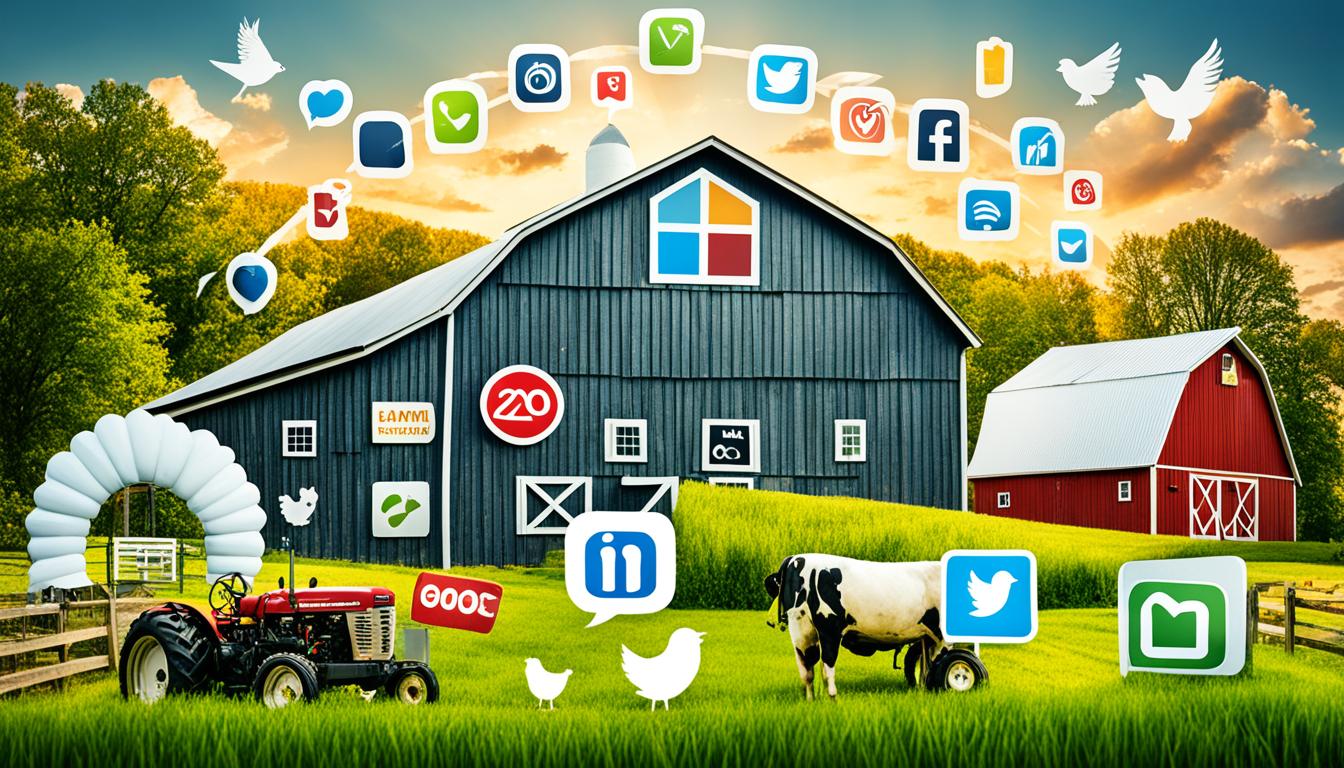
Did you know 46% of farmers use social media for their business every week? This is a big change, especially for farms in regions like South-South Nigeria. Social media tools like WhatsApp and Instagram help farmers sell more. They save money and make their products more wanted. This proves that using social media to sell farm produce can help fight poverty and boost economies.
The farming industry is facing some tough challenges, including the fact that most farmers are quite old, around 58 years on average. But, the use of social media is helping to bring in younger people. It offers new and organic ways for farms to grow online. This means that, with better access to information and ways to connect, farmers in less wealthy areas can do better. They can improve their lives by reaching more buyers for their goods.
Social media is changing how farmers sell their products. It has made traditional methods of marketing and selling goods different. Now, farmers can use the internet to reach more customers, which is especially helpful in Nigeria. This new way of marketing is cheaper and takes advantage of the fact that many farmers use mobile phones. This makes it easier for them to communicate with people who might buy their products.
Farming has also gone digital in its marketing. Now, instead of just using words, farmers can show their products on places like Facebook, Instagram, and WhatsApp. This change has brought many benefits. For example, in the South-South of Nigeria, using social media has not only made marketing cheaper but also caused more people to want to buy agricultural products. This has led to better sales and profits.
It’s important to know how many farmers are using social media. The Technology Acceptance Model and the Theory of Agricultural Marketing Cooperatives help explain why farmers find social media helpful and easy. Studies show that 72% of adults in the US use social media in some way. This shows that social media can help farmers reach a lot of people in the market.
Older people are also starting to use social media more. For those aged 50 to 64, their use of social media has increased significantly in recent years. Younger people, from 18 to 29, like to use sites like YouTube and TikTok to connect with others. Women often use certain platforms more than men, showing how different groups can be reached through social media marketing.
“Social media presence can lead to increased recognition, richer customer experiences, improved customer loyalty, better search engine rankings, and enhanced consumer insights,” notes research.
For farmers, knowing about these trends is important when they want to sell through social media. Many customers look to social media for help and prefer buying from businesses that answer their online questions. This shows how vital it is for farmers to be active and quick to reply on social media.
Using platforms like WhatsApp and Instagram for selling crops is a big deal for farmers. Only 26% of businesses use social media. So farmers who use it can get a lot of benefits.
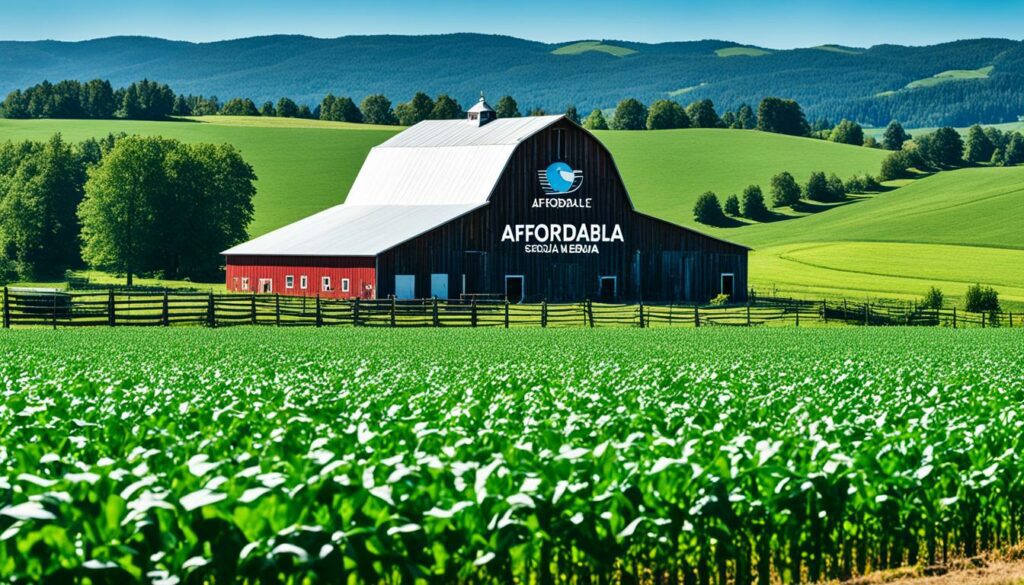
Facebook, Instagram, and YouTube help farmers market better. They can target ads well, reaching the right people. With billions using Facebook and Instagram, there’s a big chance to connect. This makes it easier for farmers to show who they are and stand out.
Social media is a cheap way to market. A study in South-South Nigeria found it cuts marketing costs a lot. Because of its low cost and good ad targeting, the ROI is very solid.
Social media not only saves money but also boosts crop sales. Platforms like Instagram and WhatsApp help reach more people. This leads to more sales. Farmers using social media see more people interested in their products.
It’s not just about posting ads. It’s also about talking with customers and understanding what they want. This helps offer better services and keeps customers happy.
Farmers are using social media to improve their work and market their products. They find Facebook, Instagram, and WhatsApp helpful. These platforms help them find new customers and connect with other farmers.
Facebook is great for selling farm products due to its many active users. It lets farmers share posts, photos, and helpful information easily. Posting a few times a week can keep you visible without becoming too much for followers.
Instagram started as a part of Facebook but is now huge on its own. It attracts over 2 billion users daily. Farmers should use hashtags to get noticed. Sharing cool pictures or videos of farm life helps tell their stories better.
WhatsApp lets farmers talk directly to customers using messages, photos, and videos. It’s a good pairing with Facebook and Instagram. This combo helps farmers talk to more people and market their products better.
Today, mobile phones are key for farmers joining social media. They improve connections and access to online platforms. The use of mobile apps is growing, helping farmers in their work and marketing.
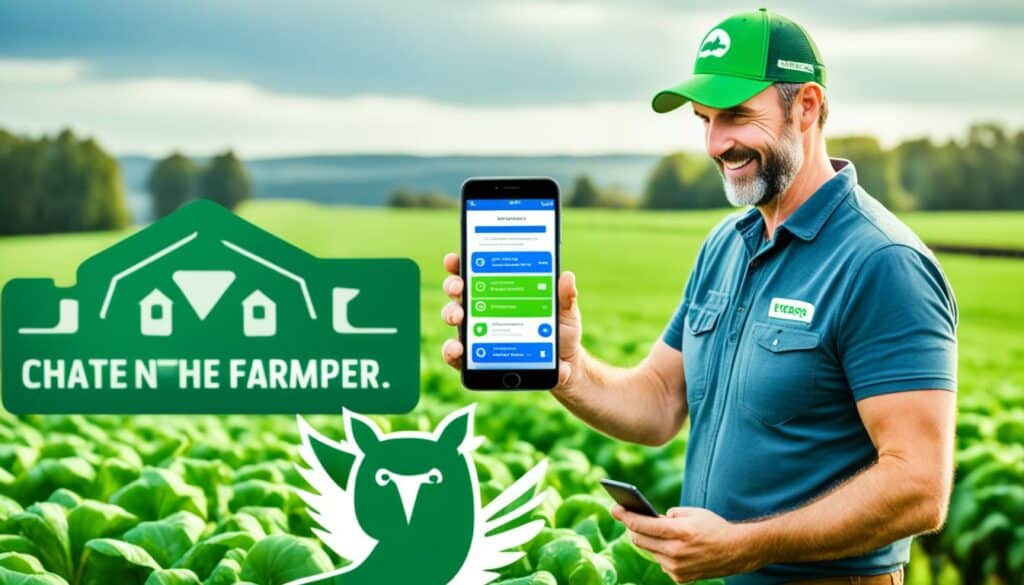
Mobile phones are boosting connections among farmers, especially in places like Vietnam. In 2021, Vietnam saw a 0.88% increase, reaching 123 million mobile subscribers. Around 90% of the country’s farmers own a mobile, with 42% using faster networks. This shows how vital mobile phones are for social media strategies in farming.
Apps are changing agriculture by making tasks like pricing and market analysis easier. In rural Vietnam, 68% of mobile users have smartphones. They spend about three hours online daily, mostly chatting. Farmers use these apps 6 to 7 times a day for short but effective sessions, which boosts their work.
Mobiles are especially important for ethnic minorities, who are about 14.7% of Vietnam’s population. Many of them face poverty and lack good infrastructure. For them, mobiles are a window to better information and markets, crucial for success in online farming.
With so many using mobiles and apps, it’s clear they are changing farming for the better. They support the trend of online farming and make traditional farming more modern. Connectivity and tech tools from mobiles are key in this shift.
| Metric | Details |
|---|---|
| Mobile Phone Subscribers | 123 million (Vietnam, 2021) |
| Mobile Phone Ownership Among Farmers | 90% |
| 3G/4G Connection Usage | 42% |
| Smartphone Ownership in Rural Vietnam | 68% |
| Daily Internet Usage Time | 3 hours |
| Instant Messaging Sessions | 6 to 7 times daily, 20 mins per session |
To market farms well on social media, planning carefully is essential. It’s crucial that farmers understand agricultural marketing and who their audience is. Knowing what kind of posts people like helps create a strong social media plan for farms.
Facebook and Instagram are key for businesses due to their active users. Since 2004, Facebook has been popular, while Instagram became important for business in 2010. They offer great chances for farm marketing.
A good social media farm plan means posting often but not too much, like three or four times each week. Using hashtags can make your posts visible to more people interested in similar things. Platforms also help to see when your posts might get the most attention.
YouTube is also a powerful way for farmers to reach more people by showing what they do through videos. Since 74% of people look at social media before buying, it can really boost farm sales. It’s also smart to sometimes pay to show your ads to people who are likely to be interested because of their age or where they live.
Both free and paid social media ads can do well for farms. This approach can help connect with people and share useful info. It can boost a farm’s reputation and improve how customers feel about the brand.
| Platform | Year Launched | Key Features |
|---|---|---|
| 2004 | High user engagement, Custom audience targeting | |
| 2010 | Business accounts, High visual engagement | |
| YouTube | 2005 | Video content, Channel subscriptions |
| 2006 | Hashtags, Trends, Quick updates |
Farmers should keep posting on social media and checking what works best. With more than 70% of adults using social media, there’s a big chance to reach many people. This can help farms grow through more sales by attracting a big audience.
Using social media in farming has changed how much farmers sell, especially in places like South-South Nigeria. By using apps like WhatsApp and Instagram, the cost of marketing farm goods has gone down. This means farmers make more money from their sales thanks to these apps.
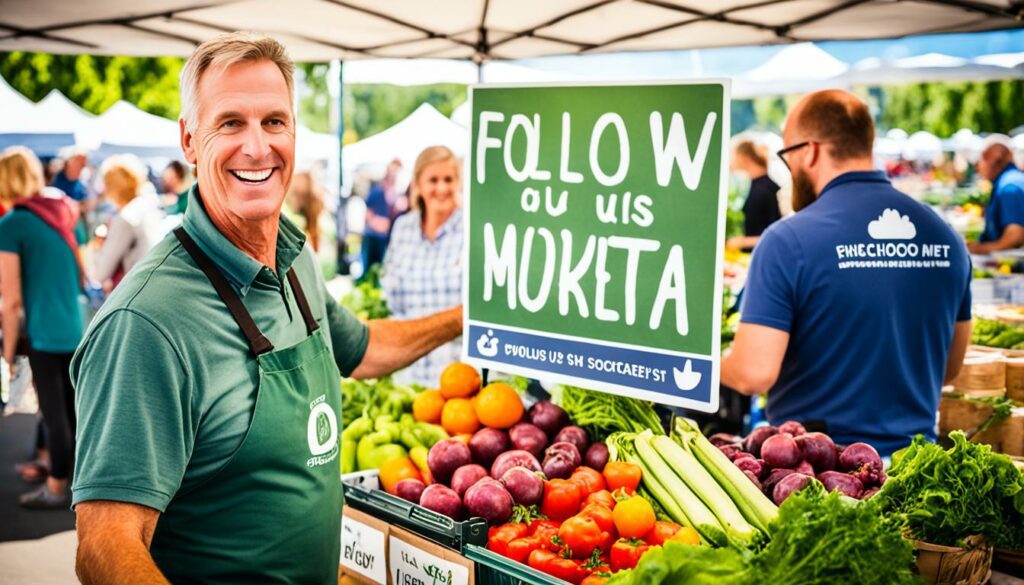
Global studies show the good influence of social media on farm sales. For example, in Iran, 57% of sales boost in a town was because of better tech use. And, in Kenya, it was found that using social media improved how ads did on TV. This proves using social media helps sell more farm products.
ICT, or tech, makes farm marketing better. This shows why using digital tools in farming today is so important.
Social media makes talking to customers easier. Farmers can share updates and offers quickly. This helps them understand what customers want. This makes people buy more from the farm.
Social media also makes learning fun. Farmers can share videos and tutorials online. This teaches people about farming, which makes them more interested. This helps sell more farm products.
As the world changes, using social media is becoming the best way to market. This shows why farmers need to use social media well. It helps them sell more and do better.
Social media is a cost-effective tool for marketing farms digitally. A joint Facebook advertising campaign among four farms had a budget of $1,200. This was evenly shared, meaning each farm spent around $261 on ads, which is below the $300 limit.
Social media offers both free and paid ways to market. A two-week campaign in February 2017 spent only $1,042 to reach lots of users. With a $5.00 daily limit per ad, this shows how controlled spending can still get significant exposure.
By using affordable social media, farms can get a big return for small costs. Ads reached between 16,767 and 28,410 users. For example, an ad named “Our Farm to Your Table” cost only $0.84 per click, gaining 312 clicks. Even with a slightly higher CPC, “Fresh & Tasty” got 224 clicks.
During the campaign, Ballerina Farm and Five Marys Farms did well using organic growth. Photos of CSA farmers were especially popular. This shows that targeted social media campaigns can engage many people without big expenses.
Social media marketing is very effective and affordable for farms. It allows them to use their ad money wisely while reaching a lot of relevant people. By combining organic growth with smart paid ads, farms can grow steadily and see better returns on their investment.
Using the best social media management methods can do wonders for your farm business. It’s vital to have a plan that uses regular posts and knows what your followers like.
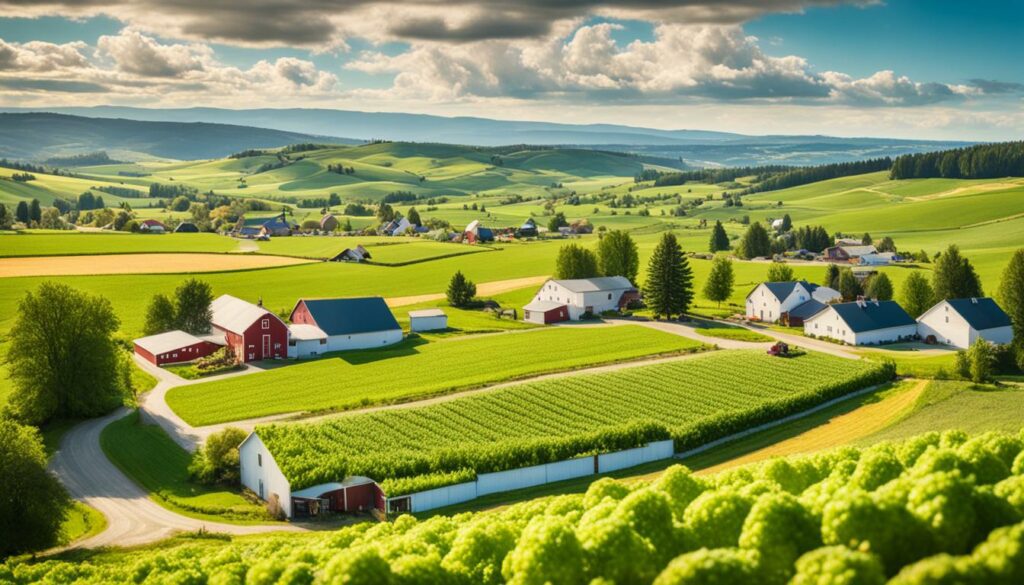
Keeping a regular schedule is important. This keeps your community interested and makes your brand more recognisable. Try to post three to four times a week at different times. It helps reach people in various time zones.
Know what your audience likes by talking and sharing with them. For example, sharing videos or photos of your daily farm work makes a connection. Use tools to see what posts do best, when to post, and which hashtags are effective.
By following these tips, farmers can make their social media shine. Good, regular content and understanding your audience makes a big difference. It helps show off your farm’s special story and what you bring to the table.
Although social media can help a lot in agricultural marketing, farmers face many challenges. They find it hard to use different platforms because of technological barriers. These barriers stop them from fully using social media’s benefits.
Technological challenges are a big problem for farmers wanting to use social media. It’s not easy for many of them to learn how to use platforms like Facebook and Instagram. This is especially true for older farmers who might not know as much about technology. Also, slow internet in rural places makes it hard to keep up with updates and talk with people quickly online.
Making interesting content for social media is another big issue for farmers. They may not have the skills or tools to make content that people like. Social media needs posts and videos that look good and grab attention. Farming ads in the local paper won’t work the same way online.
Instagram is great for showing off farm life, and YouTube is good for teaching about farming. But understanding how to use these tools well can be tough. Farmers need to keep learning about hashtags and the best times to post. This learning is important for social media success.
To make the most of social media, farmers need to tackle these technology and content challenges. They need training and resources to use social media better. By doing this, they can improve their online presence. This will help them sell more of their products.
The digital world is changing fast, and with it, social media farm sales are too. Soon, farmers will use new technologies to reach their audience better. They will offer more interactive and personal marketing, making sure customers really see and enjoy the content.
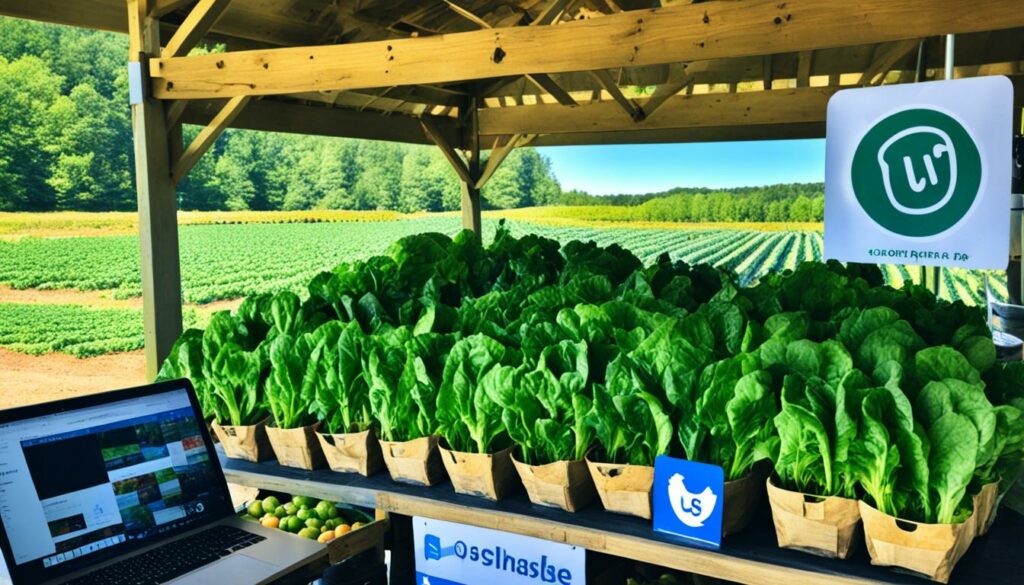
Data analytics will become a big part of selling on social media. Farmers will be able to use this information to make their ads better. This means they can target certain groups more effectively, leading to higher sales.
Facebook and Instagram are key for farming businesses. In fact, about half of farmers use these sites each week. Since most farmers under 45 use their phones to browse the internet, the focus will shift more to mobile devices. This includes making mobile-friendly apps and websites.
On top of that, sites like Facebook Marketplace and Etsy will help farmers find more customers. They provide new ways to sell products online, making it easier to boost income. Keeping up with these changes is important for any farmer wanting to succeed in social media marketing.
Building a strong brand online will also be vital. This will help customers trust and stay loyal to a farm. With direct connections through social media, farmers have a better chance to increase their sales.
The key to future success in social media farm sales lies in being interactive, personal, and data smart. To make the most of this, farmers will need to follow new trends closely.
Social media has changed how farmers connect with people. It has led to some impressive stories. They inspire others to make use of these online platforms too.
Olly Harrison, a farmer from Merseyside, earned £2,438 last month from his YouTube videos. They’ve got 3.8 million views in a year. Gareth Wyn Jones in Wales got an amazing 32 million views on Facebook last March. These farmers show the power of social media farm sales.
Abi Reader in south Wales used Facebook, Twitter, and Instagram to talk about bovine TB. Her videos got over 70,000 views with only two negative comments. This shows how social media can bring farmers together.
Richard Heady from Northamptonshire shares his farm work in short videos. Ben Andrews, from Herefordshire, has nearly 50,000 Instagram followers. They enjoy his funny and personal posts. This shows how social media farms attract all sorts of people.
Grant Hilbert started his YouTube channel at 15 and now has 1.3 million followers. He bought 250 acres of farmland worth $1.8 million. His videos are very popular, with some hitting 1 million views quickly.
The farmers’ success teaches valuable lessons. Creating consistent content for viewers is key, as Olly and Gareth show. Abi Reader’s success comes from being real and building a strong community.
Using eye-catching pictures and talking to fans regularly, like Ben and Richard do, strengthens connections. Lastly, new and creative ways to use social media, like Grant’s channel, can lead to more opportunities. It shows how important social media farms are in today’s farming.
Organic social media growth is key for any farm’s social media strategy. It helps build a loyal audience without big costs upfront. This growth comes from daily posts and interactions, which boost a farm’s online reputation.
By also using paid ads, a farm can quickly target specific people. This combined strategy can boost a farm’s social media impact.
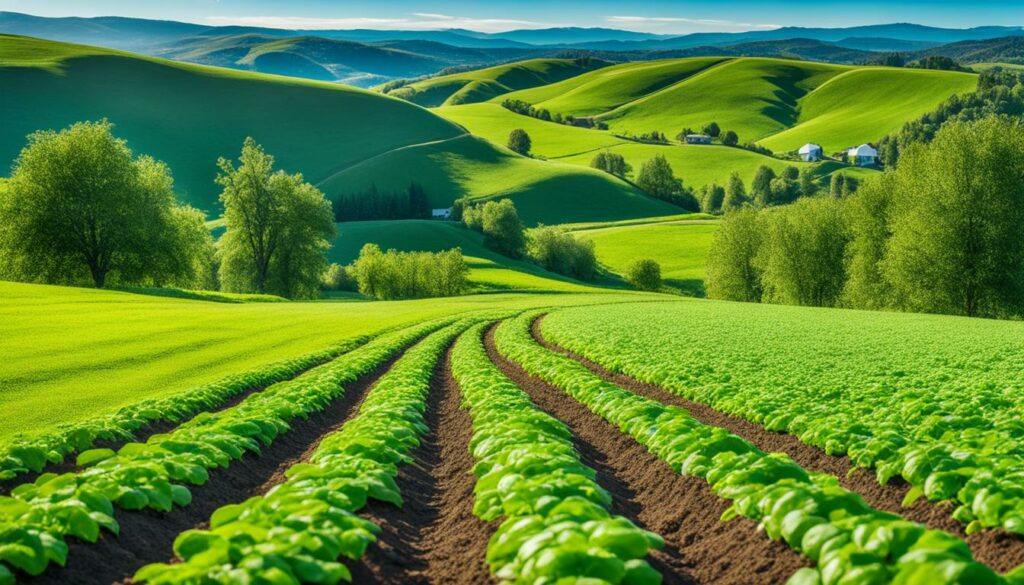
| Benefits | Organic Social Media Growth | Paid Advertising |
|---|---|---|
| Cost | It’s mostly free, based on what you post and how you engage | Costs money, but brings great returns, seen as a wise investment |
| Audience Reach | It’s a slow process, needing good posts and people sharing them | You reach people quickly, targeting the exact ones you want |
| Longevity | It builds up over time for a lasting reach | Good for quick promotions, and supports the slow growth too |
| Brand Engagement | Helps to trust and grow a community gradually | Ramps up interest fast but needs careful planning |
Knowing what your audience likes is crucial for growing organically. By keeping your content engaging, farms get a sense of what clicks with their fans. This makes interactions more meaningful. Also, using social media for customer service can boost loyalty.
About 80% of farms are now active on social media, like on Facebook and Twitter. For many, Instagram is now a big player, with its focus on visuals. It helps tell the farm’s story and connect with people. Twitter and YouTube are also important, offering updates and educational content.
Combining organic growth with paid ads is a powerful mix. This strategy boosts a farm’s online presence, ensuring steady and profitable results from social media.
The modern world of farming sees a big role for social media. A well-thought-out plan online is key for farms to do well in marketing. It’s about setting clear goals, finding what to measure, and changing tactics when needed.
The heart of success in social media for farms is having clear goals. These goals can be about making people more aware of the farm or boosting sales. It means talking a lot with followers, sharing interesting posts, and posting regularly. Social media ads are a cheap and good way to target ads. With most businesses not yet using social media fully, there’s a big chance for farms to stand out.
Knowing what to measure is crucial for a social media plan’s success. Things like how much people interact or actually buy can show how well it’s working. Good online engagement can increase sales by quite a bit, showing how important it is to be active online. Posting a few times every week can really help. Facebook and Instagram have huge numbers of users, making them great for getting a farm’s name out there.
Social media has turned around farm sales for the better. It’s a great way to market, engage with people, and build a brand. With the right use of demographics and analytics, farmers can reach their audience. This boosts their marketing and increases their sales.
Farmers can show off their products by using Instagram and Pinterest. It’s key to post regularly to stay visible and keep customers interested. Adding the right hashtags can also help make posts seen more.
Responding to comments and sharing user content is a great way to connect with customers. Using top-notch images and posts helps a lot. Working with local influencers can also make a big difference.
Running contests and checking on how well you’re doing keeps things fresh. These steps help build a loyal fan base. They also make sure your brand is seen and constantly improved. Getting help from experts at places like susocial.ca is a smart move. They offer the right help for planning and creating content and checking what works. Following this advice will help farmers succeed in the online world. It will boost their sales and reach more people.
Social media has greatly improved farm sales. It makes marketing more efficient and cuts costs. Platforms like WhatsApp and Instagram help farmers reach more people without spending a lot.
Digital marketing in farming has moved away from old ways. Now, it uses social media to connect more and market better. This change is especially clear in South-South Nigeria, where more effective and cheaper marketing is happening.
More and more farmers are using social media because they see its benefits. Models like the Technology Acceptance Model show that when people see social media as useful and easy to use, they start to use it.
Social media makes selling farm products more efficient and cheaper. It also reaches more people and creates more demand. This means it’s a great way for farmers to connect with more customers cost-effectively.
Facebook is the favourite among farmers. They also like Instagram and WhatsApp. They use these platforms to share, advertise, and learn through educational posts.
Mobile phones are key for farmers using social media. They help with more connection and access to farming tools and info. Farmers use mobile apps for pricing, stock keeping, and checking market conditions.
Good strategies include knowing the audience well, posting content regularly, and using both free and paid methods. It’s important to create content that people like and that shows what makes the farm special.
Social media has really boosted farm sales. It does this by creating more interest and improving how farmers connect with customers. Platforms like WhatsApp and Instagram allow direct customer communication, which improves relationships and sales.
Yes, social media marketing is very cost-effective for farms. It doesn’t need a big initial investment, and paid ads target people accurately, giving a good return on what’s spent.
Best ways include regular posts, knowing what the audience likes, and interacting with them by telling stories. Keeping the content good and consistent helps people know and like the farm more.
Farmers may find it hard to use social media and make interesting content. Getting past these challenges is crucial for successful marketing. It’s important to learn how to use social media and make content that people want to see.
In the future, we’ll see more interactive, personalised marketing. Stories will play a bigger role, and using data to understand what works best will be more common. These changes should make marketing even more effective.
Many farmers have found success using social media. They increased their sales and made their brands stronger. These stories show how creative social media use can change a business.
Putting effort into growing a community naturally and using ads together can make marketing better. Organic growth builds a lasting audience, while ads offer quick visibility and target the right people. This mix leads to solid, long-term success.
A good social media plan is critical for making the most of digital marketing. It sets clear goals and knows what to measure. By watching what works and changing when needed, farms can see better sales, keep customers, and grow.